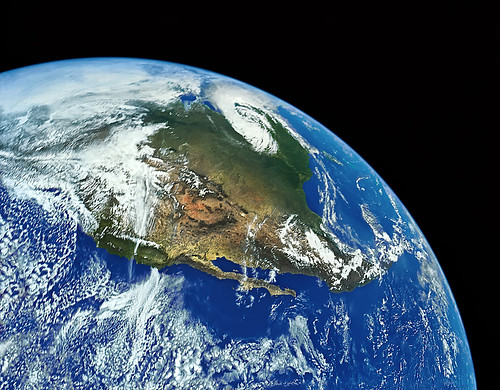微軟與聯合國環境規劃署(UNEP)合作,開發出第一個模擬全球及地區性的生物互動電腦模型(Madingley Model),幫助科學家和決策者解答重要環境問題。
有機體與環境如何互動 可模擬任一生態系
Madingley模型以現實中的基本生態工具為基礎,由微軟的電子計算科學實驗室和UNEP在劍橋的世界保育監控中心共同開發出這項技術,首次讓科學家得以模擬地球上所有的生物體如何在不斷改變的環境中互動。
研究團隊一開始僅模擬五大洲、海洋、氣候等全球地質模型。隨著模擬越來越進步,科學家漸漸開始觀察並評估不同型態有機體與特定環境間的互動,以及有機體是如何受到環境變遷的影響。
Madingley模型能評估和預測人類對生態系統的影響,可應用在任何一個生態系統,包括海洋和陸地,以及從小到大各種規模,還能提供其他模型所缺少的長期性和全球性的預測能力。
Madingley模型涵蓋所有生態系統中的有機體,從最小的到最大的,解碼每個有機體的生物特性和行為,以瞭解牠們和環境的互動,進而預測每個有機體的命運,也預測生態系統結構和功能的變化。
Madingley模型同時也是開放資料,開發人員開放原始碼,希望科學界能加入改善這個模型。
了解生態崩壞 協助決策者防範
 UNEP執行主任Achim Steiner28日發表Madingley模型時說,「這是第一個結合所有重要生物過程、生命週期與生物行為生態理論的模型,涵蓋能量取得、攝食代謝、繁殖、分布與地球,將有助我們了解生態崩壞的原因與影響,幫助科學家和政府加以防範和緩解。」
UNEP執行主任Achim Steiner28日發表Madingley模型時說,「這是第一個結合所有重要生物過程、生命週期與生物行為生態理論的模型,涵蓋能量取得、攝食代謝、繁殖、分布與地球,將有助我們了解生態崩壞的原因與影響,幫助科學家和政府加以防範和緩解。」
「全球生態系統快速崩壞,威脅天然商品和服務的生產,進而威脅所有依賴維生的生命。為了減少甚至逆轉崩壞的趨勢,我們需要預測人類行為對生態系統的影響。」一位研究Madingley模型的學者表示。
「Madingley模型的預測結果和真實世界中的觀察結果非常相似,從個體、群體到整個生態系統和全世界皆然。」研究者說。
科學家能用Madingley模型回答過去無法解答的問題,例如:如果一個生態系統完全消失,會發生什麼事?科學家也可以看到,如果決策者不採取保護行動,地球的下場會是如何。
The first computer model that can simulate how all living creatures interact on a global or local scale has been released by Microsoft and the UN Environment Programme to help scientists and policy makers answer crucial environmental questions.
Microsoft’s Computational Science Lab and United Nations Environment Programme World Conservation Monitoring Centre, based in Cambridge, have created this simulation of life on Earth, following a set of basic ecological tools found in the real world.
The open source technology allows scientists, for the first time, to simulate how all organisms on earth interact in a changing environment.
The Madingley model can assess and predict human impacts on a wide range of ecosystems. It can be applied to any ecosystem, marine or terrestrial, and can be applied at any scale from local to global.
Because the Madingley Model is open sourced, the developers hope the scientific community will dissect and improve on the current version.
“Ecosystems across the world are being rapidly degraded. This threatens their provision of natural goods and services, upon which all life depends,” the authors of a study describing the new model say.
“To be able to reduce – and one day reverse – this damage, we need to be able to predict the effects of human actions on ecosystems,” say the authors.
The Madingley model can provide long-term, predictive and truly global insight lacking in other computer models.
Announcing the new model on April 28, UNEP Executive Director Achim Steiner said,
“The model is the first to couple all of the key biological processes and ecological theory that underpin the life cycle and behavior of living organisms, from energy acquisition, to feeding metabolism, reproduction, dispersal and earth,” said Steiner.
“The tool will improve our understanding of the causes and impacts of degradation, helping scientists and governments develop avoidance and mitigation measures,” he said.
The team initially simulated the physical Earth with continents, oceans and a global climate, before inserting digital organisms.
As the simulations progress over time, scientists are able to observe and assess how different types of organisms interact with environmental niches and how they might be impacted by a changing environment.
The Madingley model covers almost all organisms in ecosystems, from the smallest to the largest, encoding the underlying biology and behavior of individual organisms to capture the interactions between them and with the environment, to model the fate of each individual organism, and to make predictions about ecosystem structure and function.
“Predictions made by the Madingley Model broadly resemble what we observe in real-world ecosystems across scales from individuals through to communities, ecosystems, and the world as a whole,” say the authors.
Scientists using the Madingley Model will now be able to answer crucial questions previously unanswerable. They will, for example, be able to show what will happen to an ecosystem if bees become extinct. They will be able to show decision makers how our world will look if action is not taken to safeguard our planet’s future.
※ 全文及圖片詳見:ENS




